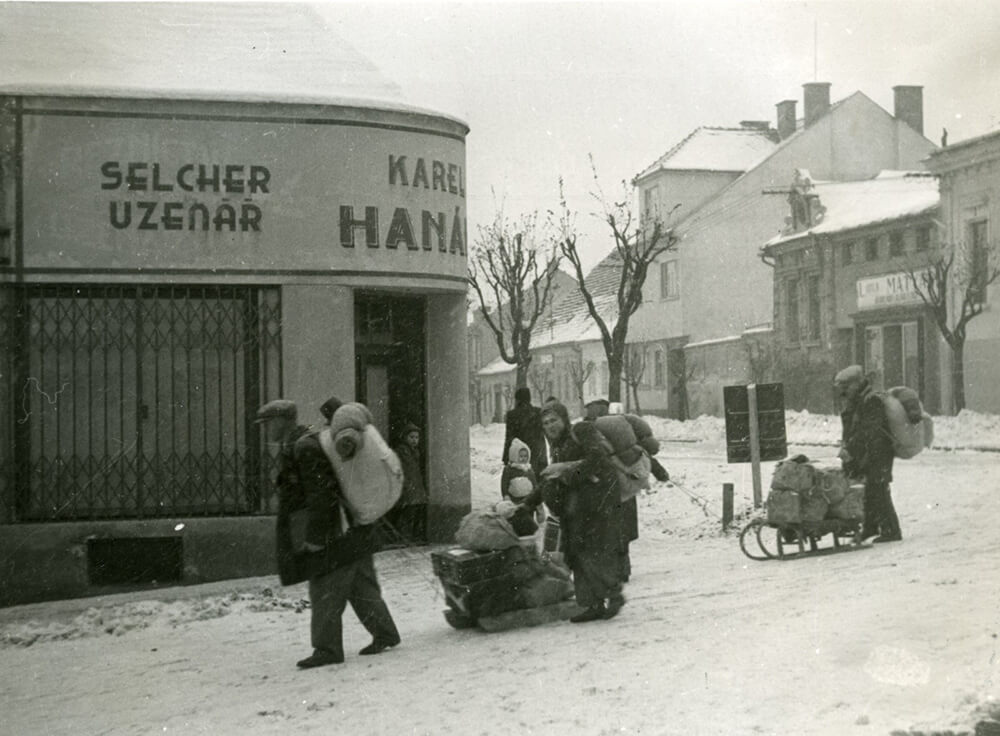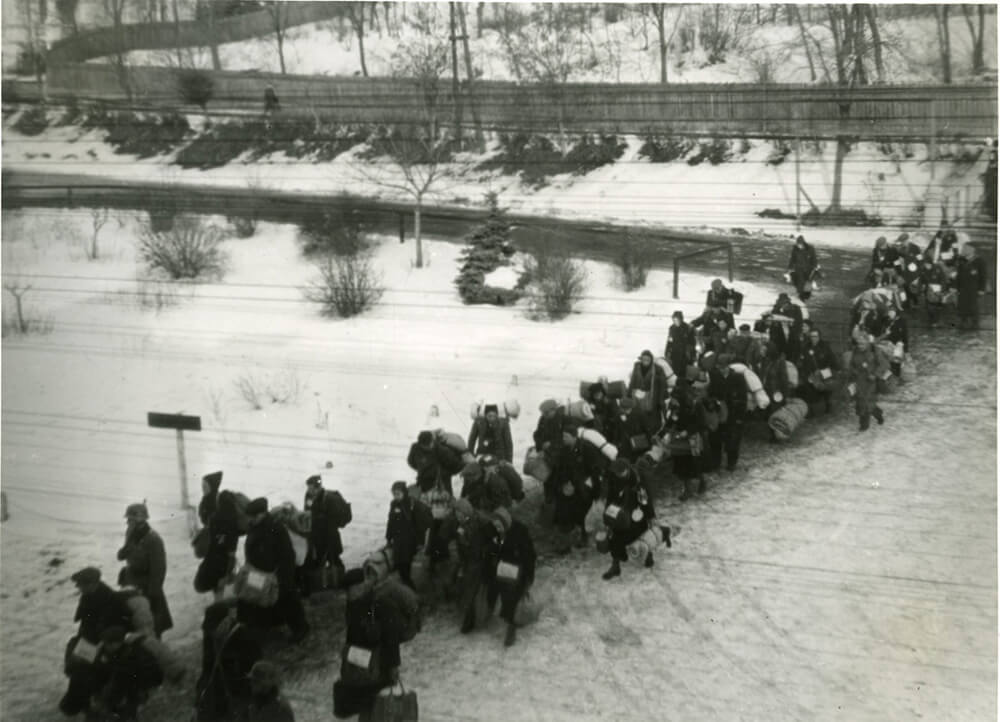Uherský Brod

Jews bringing luggage to the assembly point at the local grammar school building in January 1943.
J. A. Comenius Museum, Uherský BrodFrom May 1941 onwards, Jews from Uherský Brod and the surrounding areas were registered and relocated to houses in the city’s former Jewish quarter. As a result, the local Jewish population increased from 800 to almost 3,000. Administration and organizational matters were dealt with by the local Jewish religious community under orders from the occupying authority. Community members were also responsible for keeping records of property seized from deportees; some of the valuables were sent to warehouses in Prague, while items of less value were sold in public auctions. The grammar school building near the railway station was used as an assembly point, where all of the Jews spent a night on straw mattresses prior to their deportation.
Three transports (designated by the letters Cn, Co, Cp) were dispatched from Uherský Brod to the Terezín ghetto in January 1943. Most of the 2,862 deportees were later deported to Auschwitz–Birkenau. Only 197 survived.
